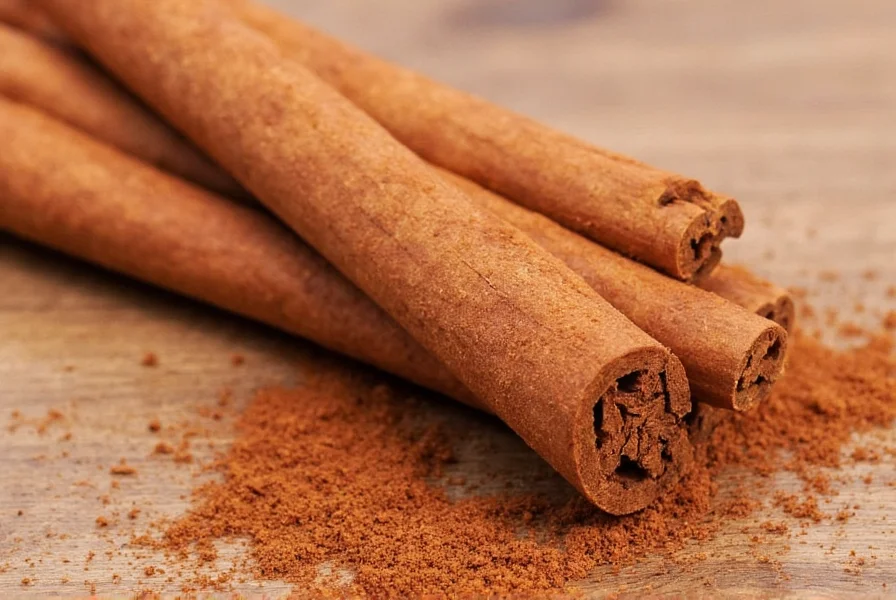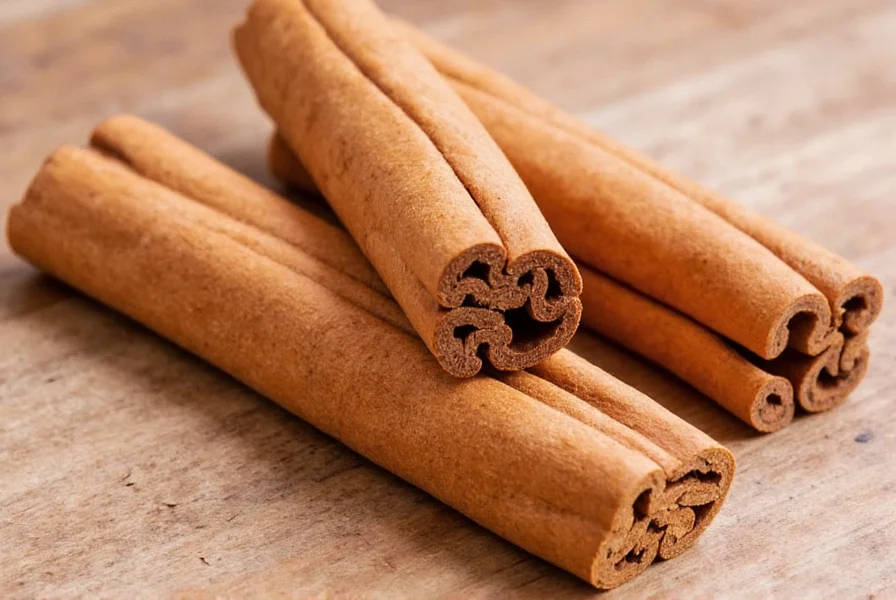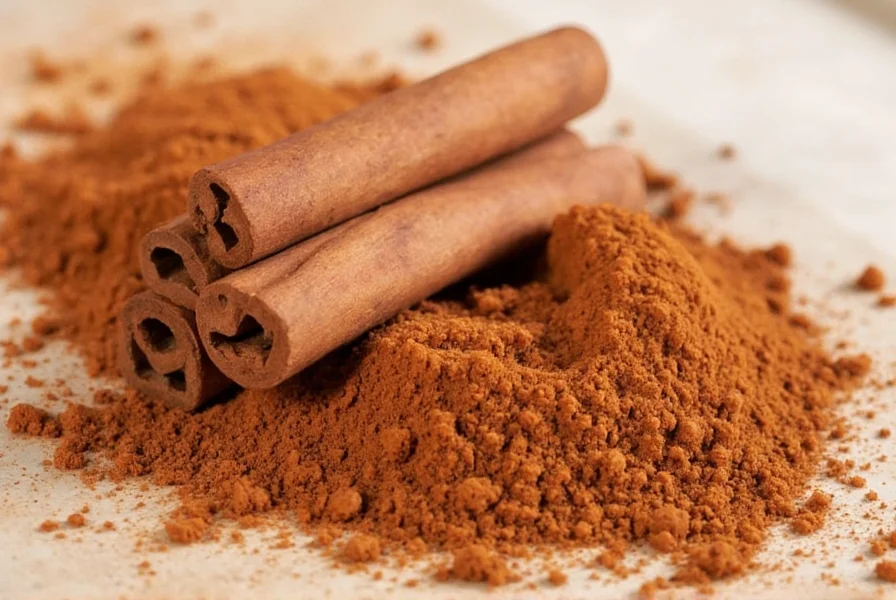Saigon cinnamon stands as one of the most potent cinnamon varieties available to home cooks and professional chefs. This Vietnamese specialty, scientifically classified as Cinnamomum loureiroi, delivers an unmistakable sensory experience that sets it apart from other cinnamon types. Its distinctive characteristics make it particularly valuable in specific culinary applications where a powerful cinnamon presence is desired.
What Makes Saigon Cinnamon Unique
Grown in Vietnam's Central Highlands at elevations between 600-1,000 meters, Saigon cinnamon benefits from ideal growing conditions that contribute to its exceptional quality. The region's volcanic soil, tropical climate, and traditional harvesting methods produce cinnamon with:
- Higher cinnamaldehyde content (up to 5% compared to 2.5-3% in regular cassia)
- Richer essential oil composition (2-6% vs 1-2.5% in other cassia varieties)
- Thicker bark layers that curl into tight, multi-layered quills
- Distinctive reddish-brown color that darkens with age
The harvesting process significantly impacts Saigon cinnamon's quality. Local farmers typically harvest trees when they reach 2-3 years of age, carefully peeling the inner bark during the rainy season when sap flow is highest. This timing maximizes the essential oil content that gives Saigon cinnamon its characteristic intensity.
| Cinnamon Type | Scientific Name | Coumarin Content | Flavor Profile | Primary Growing Region |
|---|---|---|---|---|
| Saigon Cinnamon | Cinnamomum loureiroi | 6,000-12,000 ppm | Intensely sweet-spicy with citrus notes | Vietnam Central Highlands |
| Chinese Cassia | Cinnamomum cassia | 2,500-8,000 ppm | Strong, woody, less sweet | Southern China |
| Ceylon Cinnamon | Cinnamomum verum | 40-360 ppm | Mild, delicate, complex | Sri Lanka |
| Indonesian Cassia | Cinnamomum burmannii | 3,000-7,000 ppm | Moderate intensity, earthy | Indonesia |
Saigon Cinnamon in Culinary Applications
Chefs value Saigon cinnamon for applications where its powerful flavor can shine without overwhelming other ingredients. Unlike more delicate Ceylon cinnamon, Saigon's robust profile holds up well in:
- Slow-cooked dishes like Vietnamese pho broth and braised meats
- Baked goods requiring strong spice presence (cinnamon rolls, snickerdoodles)
- Spice blends for rubs and marinades
- Winter beverages like mulled wine and spiced cider
- Preserves and fruit compotes where acidity balances its intensity
When substituting Saigon cinnamon in recipes calling for other varieties, use approximately 25-30% less due to its stronger flavor. For example, where a recipe specifies 1 teaspoon of Ceylon cinnamon, use about ¾ teaspoon of Saigon cinnamon to achieve balanced results without overpowering other flavors.

Health Considerations and Safety
Saigon cinnamon contains high levels of coumarin (6,000-12,000 parts per million), a naturally occurring compound that may cause liver toxicity when consumed in large quantities over time. The European Food Safety Authority recommends a maximum daily intake of 0.1 mg coumarin per kilogram of body weight.
For a 150-pound adult, this translates to approximately:
- 1.5 grams (about ½ teaspoon) of Saigon cinnamon daily
- 4.5 grams (about 1½ teaspoons) of Chinese cassia
- Over 28 grams (nearly 1 ounce) of Ceylon cinnamon
Individuals with liver conditions or those consuming cinnamon regularly for health benefits should consider Ceylon cinnamon as a safer alternative. However, Saigon cinnamon remains perfectly safe for occasional culinary use at standard spice quantities.
Selecting and Storing Authentic Saigon Cinnamon
When shopping for genuine Saigon cinnamon, look for these quality indicators:
- Deep reddish-brown color (lighter than Chinese cassia)
- Tight, multi-layered quills (2-3mm thick)
- Strong, sweet aroma with citrus notes
- Smooth texture without excessive cracking
- Vietnam origin labeling (specifically Central Highlands region)
Store Saigon cinnamon in an airtight container away from light and heat. Whole sticks retain freshness for 2-3 years, while ground cinnamon maintains optimal flavor for 6-12 months. For maximum flavor impact, toast whole sticks briefly in a dry pan before grinding for recipes.

Conclusion
Saigon cinnamon offers a distinctive flavor experience that elevates specific culinary creations where bold spice presence is desired. Understanding its intense profile, proper usage measurements, and safety considerations allows home cooks and professionals to leverage its unique qualities effectively. While not suitable for daily high-volume consumption due to coumarin content, Saigon cinnamon remains a valuable specialty spice for creating memorable dishes with authentic Vietnamese character.
Is Saigon cinnamon the same as cassia cinnamon?
Saigon cinnamon is a specific variety of cassia cinnamon (Cinnamomum loureiroi), distinct from Chinese cassia (Cinnamomum cassia). While both are cassia types, Saigon cinnamon has higher essential oil content (2-6% vs 1-2.5%), a more complex flavor profile with citrus notes, and typically higher coumarin levels than Chinese cassia.
Can I use Saigon cinnamon instead of regular cinnamon in recipes?
Yes, but with adjustments. Due to its stronger flavor, use approximately 25-30% less Saigon cinnamon than recipes calling for regular cassia or Ceylon cinnamon. For example, substitute ¾ teaspoon of Saigon cinnamon for every 1 teaspoon of other cinnamon varieties to prevent overpowering your dish.
Why is Saigon cinnamon more expensive than other cinnamon types?
Saigon cinnamon commands higher prices due to its limited growing region (Vietnam's Central Highlands), labor-intensive harvesting process, superior oil content (2-6% vs 1-2.5% in other cassias), and distinctive flavor profile. Authentic Saigon cinnamon requires specific growing conditions and traditional processing methods that increase production costs.
How can I tell if I'm buying authentic Saigon cinnamon?
Authentic Saigon cinnamon displays a deep reddish-brown color (darker than Ceylon but lighter than Chinese cassia), forms tight multi-layered quills 2-3mm thick, emits a strong sweet-spicy aroma with citrus notes, and should specify Vietnam (particularly Central Highlands) as its origin. Be wary of products labeled simply as "cassia" without specific regional identification.
Is Saigon cinnamon safe for daily consumption?
Saigon cinnamon contains high coumarin levels (6,000-12,000 ppm) and isn't recommended for daily high-volume consumption. The European Food Safety Authority suggests a maximum of 0.1 mg coumarin per kg of body weight daily, which translates to about ½ teaspoon for a 150-pound adult. For regular daily use, Ceylon cinnamon (with 40-360 ppm coumarin) is a safer alternative.











 浙公网安备
33010002000092号
浙公网安备
33010002000092号 浙B2-20120091-4
浙B2-20120091-4